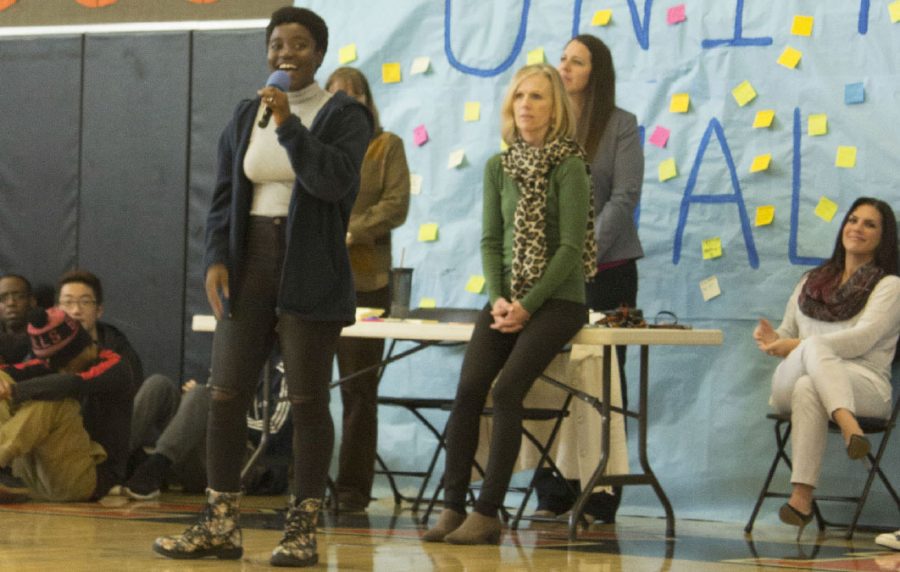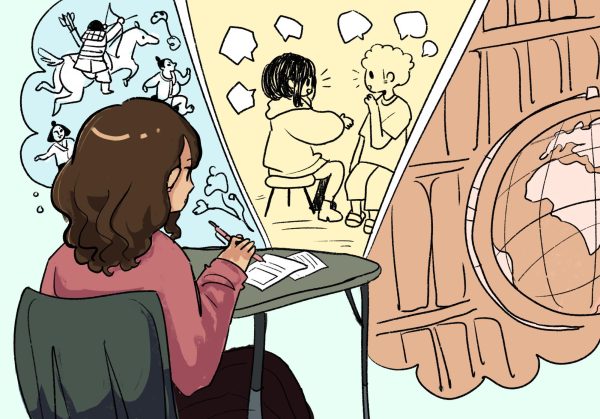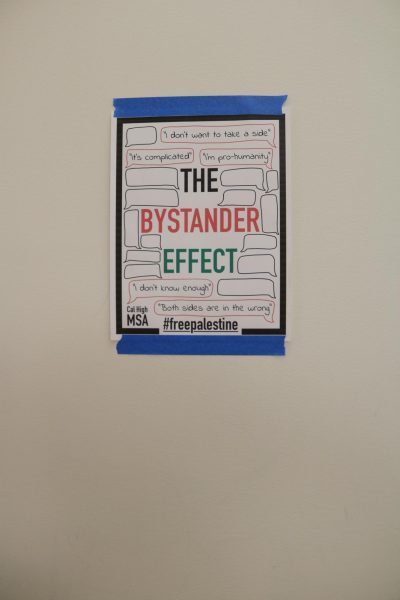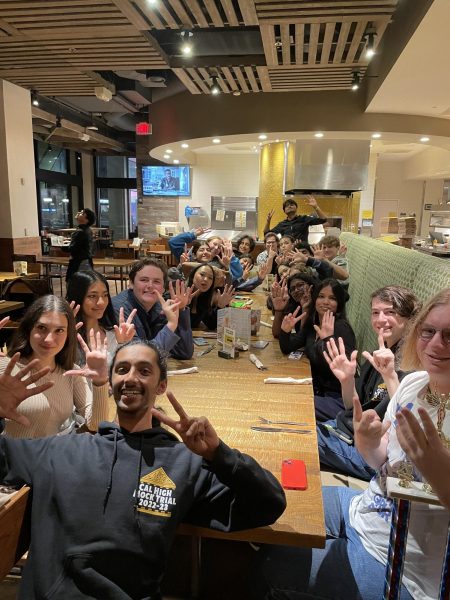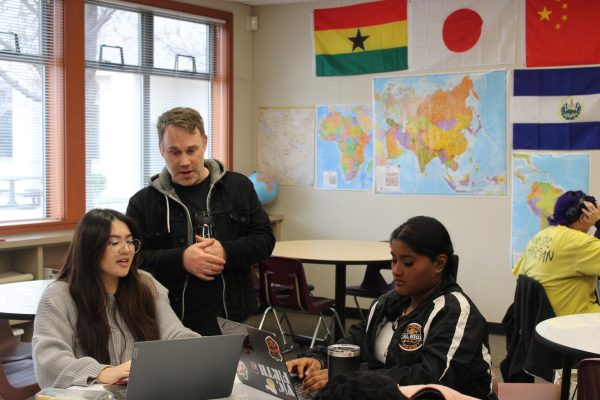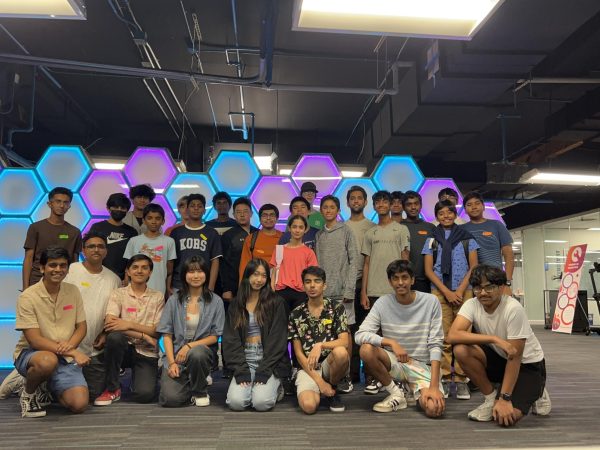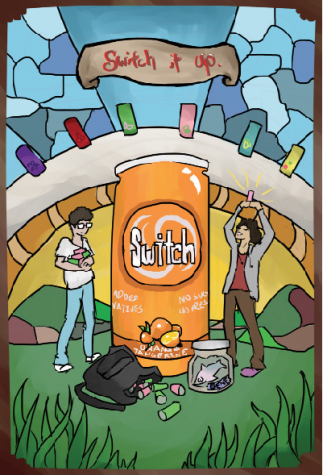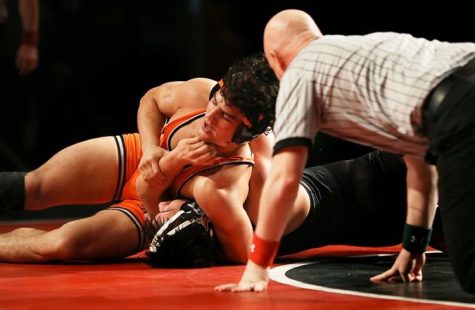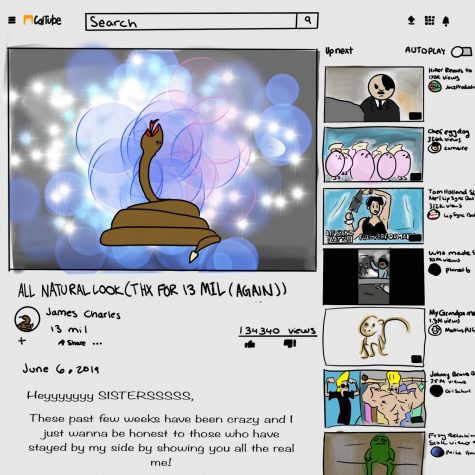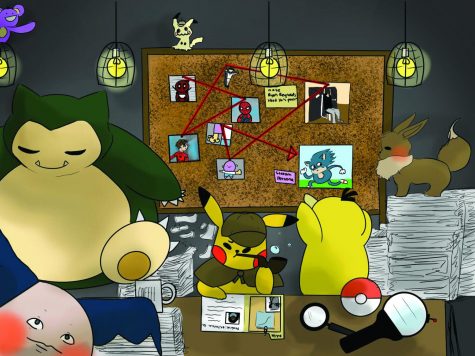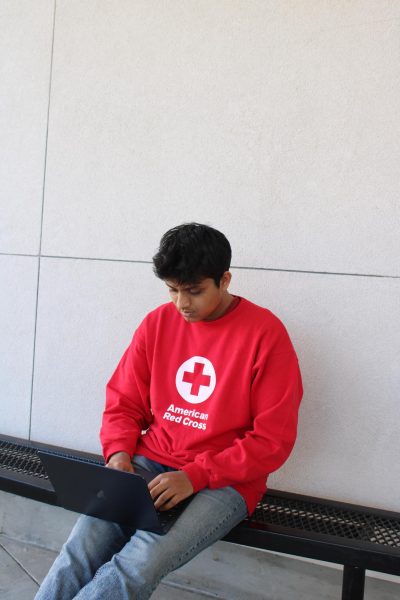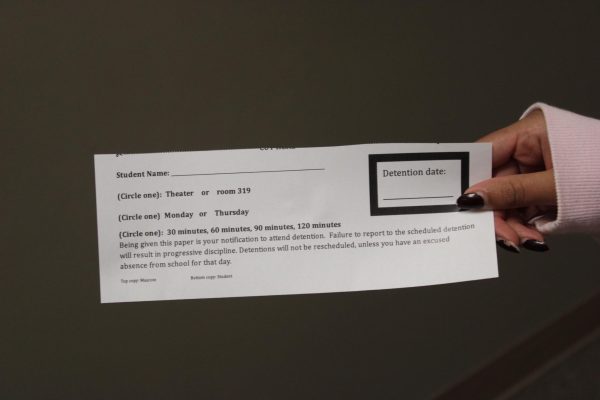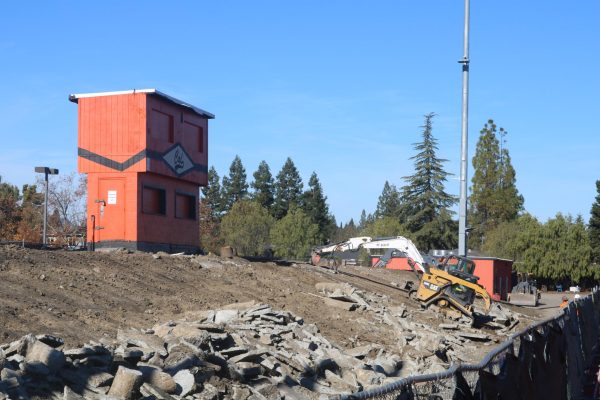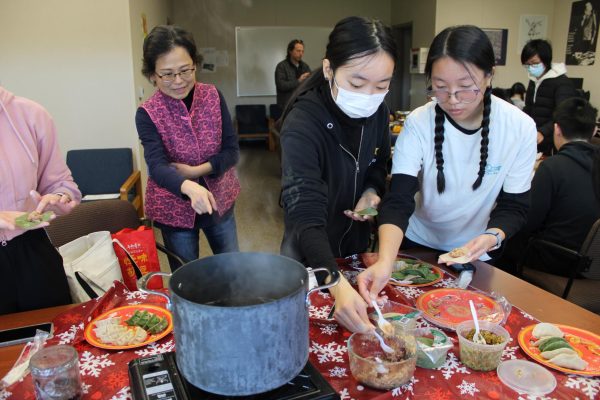Racism remains an issue on campus
The previous months have taken a toll on Cal High as many students, staff and parents have become exhausted by the issue of racism.
Since the first instance of racist graffiti at Cal was discovered on Oct. 18, three more incidents of graffiti, an emergency meeting between parents and the principal, and a school-wide assembly have occurred.
As The Californian reported last month, the graffiti in the first floor men’s restroom in the World Language building above the urinals designated “white” and “colored” urinals. A later incident of graffiti read of messy, obscene language, saying things like “No n——s alowed(sic)” and “This bathroom is not to be used by f—ing n—–s.”
The issue was reignited on the morning of Nov. 17 when more racist graffiti was discovered in the men’s restroom on the first floor of the main building.
More offensive graffiti was found in another restroom the following day as well.
The graffiti included similar messages from the previous instances. These messages included “f— n——” and “I hate n—–.” But this time there was a threat to Cal’s Black Student Union which read “f— BSU.”
Racist graffiti also was also discovered on Nov. 17 in a bathroom at Monte Vista High School in neighboring Danville.
“I think as long as we don’t bring light to situations like that, it makes the people who are perpetrating the racism and the hatred make it feel like it’s OK,” BSU president Alanah Winston said.
Cal entered a state of semi-lockdown on the morning of Nov. 18, when only two bathrooms in World Language building were available for use on the entire campus.
Students were only allowed out of classrooms under adult supervision while school officials checked other bathrooms for more graffiti. The lock down was lifted by fourth period, but a mandatory sign out sheet for bathroom use remained for the rest of the day.
After the incident on Nov. 18, Principal Sarah Cranford hosted an emergency meeting for parents that evening even though students and staff left that day for Thanksgiving break.
During the meeting in the student union, which was packed with parents and cameras from five Bay Area news outlets, parents accused school officials for not responding to incidences of racism appropriately or at all.
Some students said they did not feel safe on campus. Parents expressed a great deal of frustration with how the instances of racist graffiti have been handled by school and district officials.
Parents also demanded that a zero tolerance policy for hate speech offenses be enacted at Cal. The policy would result in guaranteed expulsion.
Meanwhile, administrators discussed restorative practices, ongoing investigations, and revision of policies.
It was revealed that the first confirmed suspect for the racist graffiti incident did not confess to his crime, but was turned in by a friend. The boy was suspended. No one else has been caught for the other incidents.
By the end of the meeting parents were not confident that administrators were capable of handling these issues. At the meeting’s end, many parents still had questions and concerns they felt were not addressed.
As the situation escalated during the evening, parents eventually gave administrators an ultimatum: hold an assembly on the Tuesday after the break to address racism on campus or face a picket line of angry parents protesting outside of Cal.
The assembly was held on Nov. 29, the week after break, in the format of an open microphone. Students and staff shared stories and spoke freely about their feelings.
Cranford also had harsh words for the student body.
“The consequences will be severe, including expulsion and criminal charges.” Cranford said. “Behaviors such as these have far reaching impacts, such as prosecution and a lasting criminal record.”
There was a feeling of tension within the event center as Cranford spoke. There was a clear tone of anger and frustration in her voice.
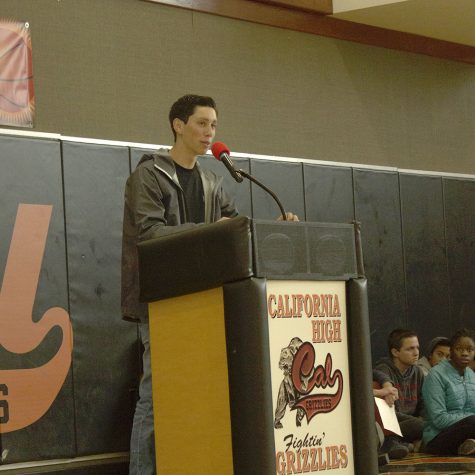
After Cranford spoke, students expressed their feelings.
“We are all people, we’re all equal. You can’t make the different people leave,” said freshman Lajolie Beurge as she read from a poem she wrote. “Take any human and a knife. Cut one, we all bleed.”
A roaring applause echoed throughout the room, many agreed with the sentiments great of Beurge’s poem.
Others expressed disdain toward the lack of attention of other minority groups. Reviews of the assembly were mixed. Some felt that the efforts of the school would go to waste.
“I think the people that wrote that stuff were neglected by their parents, so they lashed out,” junior Sean Gow said. “By doing an assembly, you’re doing exactly what they want. You’re doing even more than they would have ever expected.”
Some students believed the discussion of racism on campus had been exhausted.
“I feel like it will accomplish nothing,” said junior James Quan, “People don’t want to talk about this anymore. People are getting fed up.”
But some felt that the assembly, although imperfect, was a step in the right direction for Cal.
“While it can be emotional and can trigger something inside of certain people when we talk about it, I think it is important to have the conversation,” Wilson said. “I think the assembly, in part, was really, really good.”
Regardless of intent, some students feel the assembly may have only led to further marginalizing of people of color on campus.
“If we are going to confront racism on our campus, it’s going to have to be a long process with a lot of work,” sociology teacher Troy Bristol said. “The assembly is going to take a good first step, but it won’t solve the problem by itself.”
Editor in chief Patrick Rettig contributed to this story.
